10 True Stories With an Ending So Twisted They Deserve an Oscar

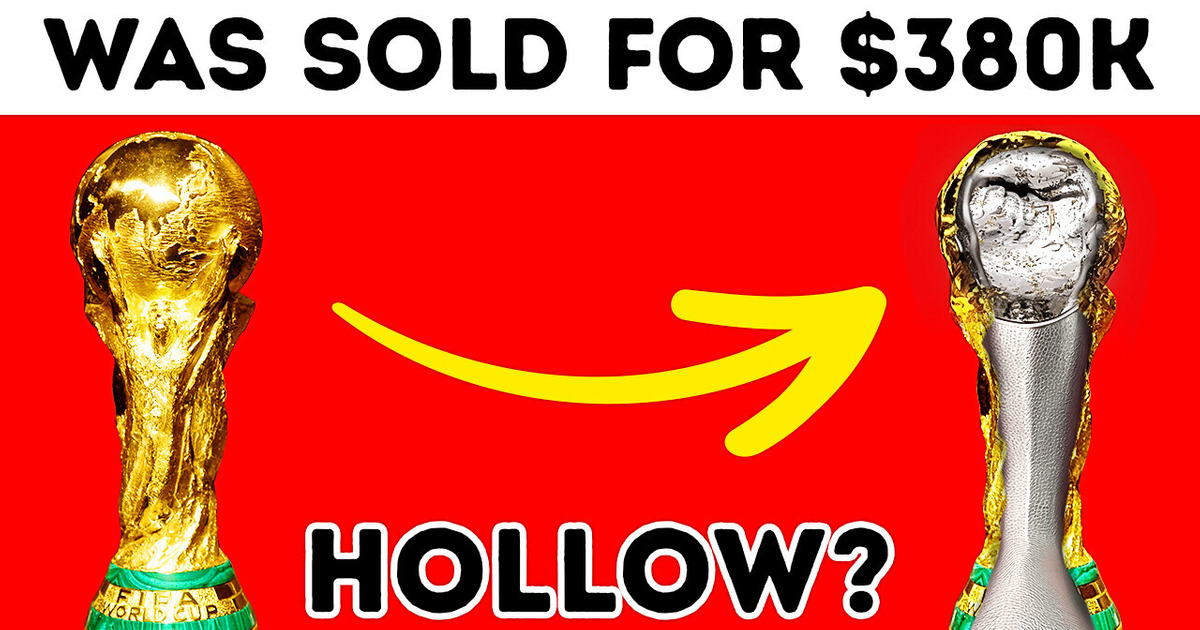
On July 30, 1930, thousands of fans were watching the first ever FIFA World Cup final in Montevideo, Uruguay. 13 nations participated in the championship. Finally, the hosts defeated its neighbors, Argentina, with a score of 4-2. That day, team Uruguay lifted the FIFA main trophy for the first time in history.

That trophy was initially named Victory and was a gold-plated sterling silver sculpture of the Greek goddess of victory Nike, 14 inches high. Nike was holding the cup over her head. It traveled to Montevideo for the first World Cup aboard an Italian passenger liner. Several years later, the trophy cup was renamed to honor Jules Rimet. He was FIFA’s third president who helped make soccer a global sport and start the World Cup. That much-desired award has seen a lot in its life.
In 1939, a very uneasy time in Europe, FIFA’s Italian vice president Otorino Barassi had to move the trophy from a bank vault and hide it in a shoebox under his bed to save it. The trophy was passed over from winner to winner until 1970. That year, Brazil won the World Cup for the third time and got to keep it.
They would have never seen the original trophy but for a black-and-white mongrel named Pickles, who saved it a couple of years before. The World Cup was supposed to take place in England. The trophy was on display at a stamp exhibition in London.
It was supervised 24/7, but a thief or maybe a group of thieves managed to break into the security case and steal the trophy on its second day on display. The search for the trophy began immediately. The thief demanded a huge amount of money as ransom. Then, he was found and arrested. But the Cup wasn’t with him.
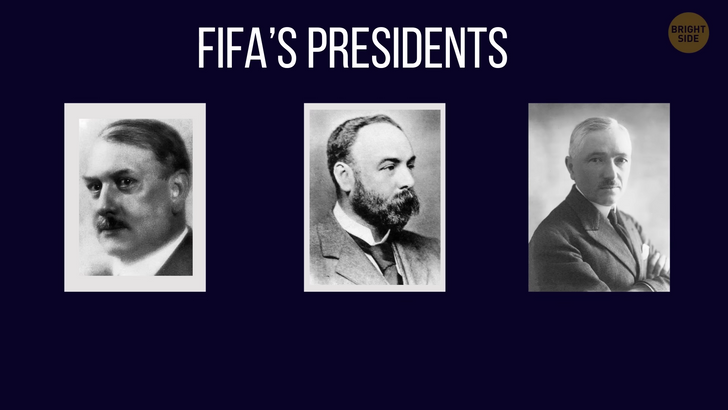
And this is where Pickles came into action. A week after the theft, the mongrel was on his regular walk with the owner. He noticed something wrapped in a newspaper beneath a hedge in the garden of his home in South London. Pickles made his owner, David Corbett, check out the find. He was very careful about it as he thought it could be something dangerous.
As David was unwrapping the newspaper, he realized the World Cup trophy itself was in his garden! Once it was confirmed that was, indeed, the real trophy, Pickles instantly became a celebrity as he made it to many covers worldwide. His owner was given a reward of over $100,000 worth in today’s money, and Pickles received a life-long supply of dog food.
A couple of months later, her Majesty the Queen handed over the well-deserved award to England’s team captain. One of the players, Nobby Stiles, performed his famous jig on the pitch with the cup. While the trophy was missing, England’s Football Association secretly ordered a gilded bronze replica of it in case the real thing would never be found.
England only got to hold the real trophy on the field. The officials came to their locker room to replace it with the replica that went on tour of the country for the following 4 years. Then, as you already know, Brazil won the World Cup and got to keep the Jules Rimet Trophy for good.
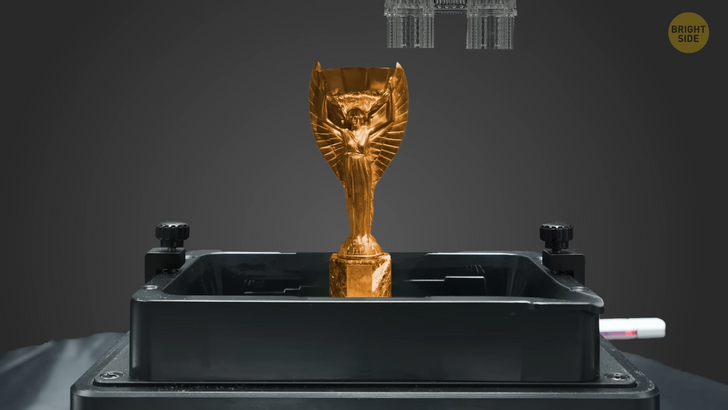
FIFA announced a design competition to create the trophy for the next World Cup. Italian artist Silvio Gazzaniga offered the best design out of 53 submissions from 7 countries. The new trophy is a statue of two athletes holding up a globe. Some people see a depiction of Pelé in it, the legendary Brazilian player who is the only one to have won 3 World Cups. The artist never confirmed it, though. According to FIFA, the trophy is made of 18-karat gold with bands of malachite on its base.
A chemist working at the University of Nottingham [Martyn Poliakoff] claims it can’t be made of solid gold. If that were the case, the trophy would have to weigh at least 150 pounds as gold is a really dense material. No one from the winning team would be able to lift it over their heads so easily. Plus, it would be a huge waste of gold. So, the scientist is sure the globe in the statue has to be hollow. So, the trophy weighs just around 13 pounds. It has an engraving “FIFA World Cup” on its base.
After 1994, they added a plate to the bottom side with the names of winning countries engraved on it. The inscriptions always have the year in figures and the name of the country in its national language. They replace the plate each World Cup cycle, and the names are rearranged in a spiral to save space. But still, there’s most likely only room for a couple more country names on the base, so FIFA will have to come up with some new idea or a replacement by 2038.
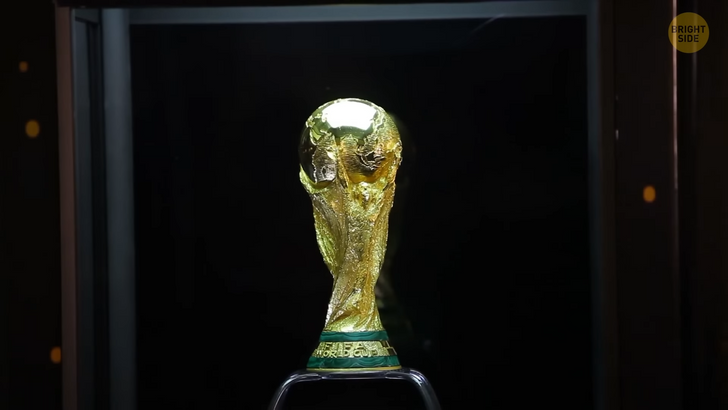
The trophy no longer travels from winning team to winning team. Now the champions only get a bronze replica which is gold-plated, and they can keep it. The original award stays at the FIFA World Football Museum in Zurich, Switzerland. It only leaves when it goes on its FIFA World Cup Trophy Tour.
On its 2022 tour, the trophy is set to visit 51 countries. The big plan is for it to visit all 211 member associations by 2030, the World Cup’s 100th anniversary. It also attends the Final draw for the next World Cup and is present on the pitch at the World Cup opening game and Final. The tradition of lifting up the trophy in the air started at the 1958 World Cup in Sweden. A photographer asked the Brazilian team captain to do it for a better view in the photos. Every champion team captain has done it ever since.
The winning team doesn’t only bring home the desired trophy but also a good cash bonus of around $40 million. The runners-up, second and third runners-up, and even group stages winners also get a nice 6-figure remuneration. So far, Brazil, Germany, Italy, Argentina, France, Uruguay, England, and Spain have won the Cup. Plus, there are at least 2 original cups, so there must be around 10 trophies and official replicas in the world, right? Well, even FIFA itself can’t tell you that because of a truly detective story that happened in 1983 in Brazil.
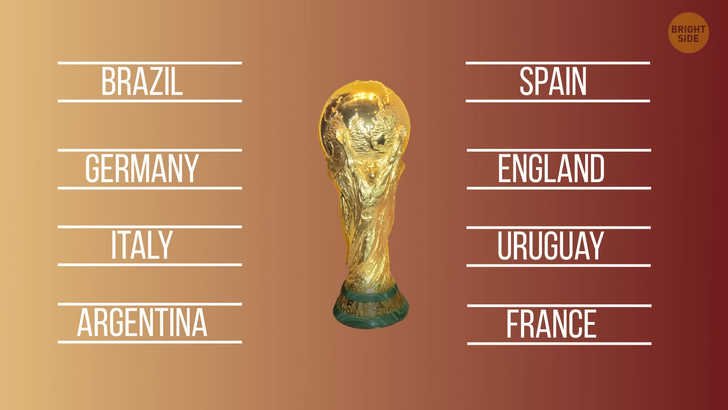
Back then, the Brazilian Football Confederation placed the first original Jules Rimet trophy on display in their office. As you know, it was now Brazil’s permanent award for having the most victories. One December evening, a group of thieves managed to tie the building’s security, opened the wooden frame of the bulletproof glass box, and took the trophy. There was also a replica in the office, but the thieves weren’t interested in it as they came for the real thing only.
Then, the search for the cup started. The Rio de Janeiro State Bank offered a hefty reward for the trophy’s safe return. The president of the Brazilian Football Confederation addressed the nation, saying that “the spiritual value of the cup is much greater than its material worth.” The appeal didn’t work, and no one has seen the trophy ever since.
The most popular version is that someone melted it down into gold bars in one of many Brazilian foundries. Or maybe it’s hidden in some collector’s basement or in a shoebox under their bed.
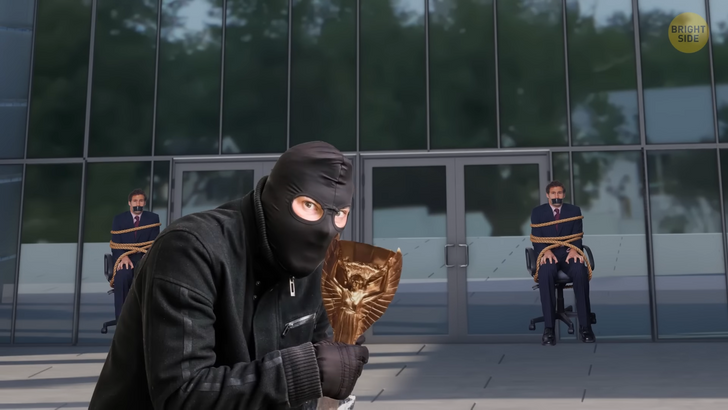
Or maybe, just maybe, it never left England after Pickles had found it. The Football Association then gave the trophy to a jeweler named George Bird. He was the one who made the gilded bronze copy of the award. The English team waved that replica to the public.
4 years later, it was time for the original trophy to go back to FIFA. But it’s possible that they received a copy instead, and the real thing stayed under Bird’s bed. A couple of years after he passed away, his family auctioned what they thought was a replica of the trophy.
FIFA bought it for around $380,000. They then took it to a jeweler to find out it was a replica worth $2,250. That must have been one big disappointment!











